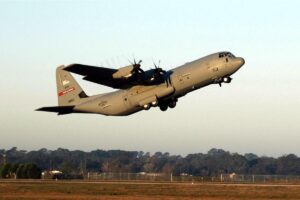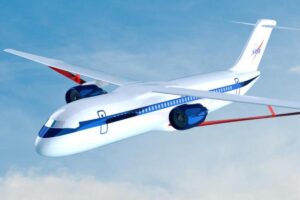Optimizing Data Communication with CAN Bus and Modbus
Introduction
Effective data communication is crucial for modern industrial systems, where seamless connectivity and real-time monitoring can enhance operational efficiency. Two widely used communication protocols, CAN Bus and Modbus, have proven indispensable in industrial applications. Each protocol offers unique strengths, specifications, and applications, making them ideal for various system requirements. This white paper explores the benefits of CAN Bus and Modbus, highlighting how they enable seamless data transfer, system integration, and real-time monitoring to optimize industrial projects.
Understanding CAN Bus and Modbus
What is CAN Bus?
The Controller Area Network (CAN Bus) protocol was initially developed by Bosch in the 1980s for automotive systems. Today, it is used extensively in industrial automation, medical devices, and energy systems due to its reliability and real-time capabilities.
Key Features of CAN Bus:
- Message-Based Protocol: Data is transmitted in small packets identified by unique message IDs.
- Multi-Master Architecture: Multiple nodes can initiate communication, ensuring flexibility.
- Real-Time Performance: Designed for applications requiring low latency and high-speed data exchange.
- Error Detection and Correction: Includes advanced mechanisms to ensure reliable data transmission.
- Scalability: Supports up to 128 nodes, making it suitable for complex networks.
What is Modbus?
Modbus, introduced by Modicon in 1979, is one of the most commonly used communication protocols in industrial automation. It is simple, flexible, and supports various device configurations, including controllers, sensors, and actuators.
Key Features of Modbus:
- Master-Slave Model: The master device communicates with one or more slave devices.
- Multiple Formats: Includes Modbus RTU, Modbus ASCII, and Modbus TCP for different applications.
- Ease of Use: Its straightforward design allows quick implementation and integration.
- Cost-Effectiveness: Ideal for low-complexity applications.
- Long-Distance Communication: RS-485-based Modbus can operate over distances of up to 1,200 meters.
Comparing CAN Bus and Modbus
Specifications and Data Formats
| Feature | CAN Bus | Modbus |
|---|---|---|
| Data Structure | Message-based | Register-based |
| Communication Model | Multi-Master | Master-Slave |
| Data Rate | Up to 1 Mbps | Up to 115.2 kbps |
| Transmission Distance | 40 meters at 1 Mbps | Up to 1,200 meters |
| Error Handling | Advanced | Basic |
Performance and Reliability
| Feature | CAN Bus | Modbus |
| Real-Time Capability | Excellent | Moderate |
| Fault Tolerance | High | Moderate |
| Scalability | High | Limited |
| Ease of Integration | Moderate | High |
Benefits of CAN Bus and Modbus
Seamless Data Transfer
Both CAN Bus and Modbus excel in ensuring reliable and efficient data transfer across devices:
- CAN Bus: Provides real-time communication with minimal latency, making it ideal for time-sensitive applications.
- Modbus: Offers simple and straightforward data exchange, suitable for legacy systems and straightforward automation tasks.
System Integration
Integrating CAN Bus and Modbus into industrial systems enables:
- Interoperability: Seamlessly connect devices using different protocols.
- Flexibility: Supports hybrid networks combining multiple communication standards.
- Cost Efficiency: Reduces infrastructure costs by utilizing existing devices and networks.
Real-Time Monitoring
Real-time monitoring is critical in industrial environments, where rapid responses can prevent downtime and improve productivity. Both protocols support:
- Data Logging: Capturing and storing system data for analysis.
- Remote Monitoring: Supervising operations from a central location.
- Predictive Maintenance: Identifying potential issues before they escalate.
Enhanced Reliability
CAN Bus’s advanced error detection and Modbus’s simple architecture ensure robust and consistent performance, even in harsh industrial environments.
Applications of CAN Bus and Modbus
Industrial Automation
In manufacturing plants, CAN Bus is commonly used for real-time control of robotic arms and conveyor belts, while Modbus facilitates communication between PLCs and sensors.
Energy Management Systems
Energy systems benefit from CAN Bus’s low-latency communication and Modbus’s long-distance capabilities, making them ideal for:
- Managing renewable energy sources like solar panels and wind turbines.
- Monitoring energy consumption and optimizing usage.
Medical Devices
CAN Bus is widely used in critical medical equipment requiring real-time performance, while Modbus supports peripheral device communication. Together, they ensure reliable operation in:
- Diagnostic imaging systems.
- Patient monitoring devices.
Transportation Systems
In transportation, CAN Bus handles critical vehicle functions like braking and engine control, while Modbus integrates with ticketing and passenger information systems.
Integration of CAN Bus and Modbus
Protocol Converters
Protocol converters translate data between CAN Bus and Modbus networks, ensuring compatibility and seamless communication. Key features include:
- Data Mapping: Converting message formats for compatibility.
- Speed Matching: Aligning data transfer rates between protocols.
- Error Handling: Synchronizing error-detection mechanisms.
Gateways
Gateways act as bridges between CAN Bus and Modbus networks, offering advanced features such as:
- Data Aggregation: Combining data from multiple sources for analysis.
- Remote Access: Enabling monitoring and control from distant locations.
- Security Features: Protecting sensitive data during transmission.
Middleware Solutions
Middleware abstracts the complexities of protocol integration, providing a unified framework for communication. Benefits include:
- Simplified integration of diverse devices.
- Support for IoT and SCADA systems.
- Scalability for future expansions.
Overcoming Challenges in Integration
Protocol Differences
To address differences in communication models and data formats:
- Use protocol converters or middleware solutions.
- Implement standardized data mapping strategies.
Network Complexity
Managing complex networks requires:
- Hierarchical network designs to streamline communication.
- Regular monitoring and optimization of system performance.
Ensuring Reliability
High reliability is achieved by:
- Selecting devices with robust error-handling capabilities.
- Conducting regular maintenance and updates.
Future Trends in CAN Bus and Modbus
IoT and Edge Computing
The growing adoption of IoT and edge computing enhances the relevance of CAN Bus and Modbus by enabling:
- Real-time data processing at the edge.
- Integration with cloud-based monitoring systems.
Artificial Intelligence
AI-powered analytics optimize system performance by:
- Predicting maintenance needs.
- Improving decision-making processes.
Cybersecurity
With increasing connectivity, cybersecurity becomes critical. Future solutions will focus on:
- Implementing robust encryption protocols.
- Securing data exchange between integrated networks.
Standardization Efforts
Standardized integration frameworks will simplify the deployment of hybrid networks, enhancing interoperability across industries.
Conclusion
CAN Bus and Modbus protocols play a pivotal role in modern industrial applications, offering unique benefits in data communication, system integration, and real-time monitoring. By understanding their specifications and strengths, businesses can leverage these protocols to optimize their operations. Integration solutions such as protocol converters, gateways, and middleware enable seamless connectivity, unlocking new possibilities for efficiency and performance. As technology advances, the combined power of CAN Bus and Modbus will continue to drive innovation and reliability in industrial systems.





